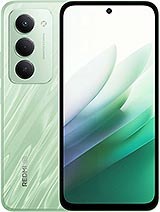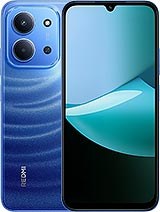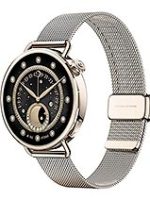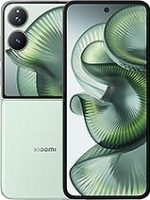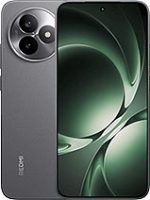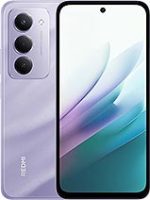Redmi 15 vs Redmi 15C
Redmi 15 vs Redmi 15C Which Budget Xiaomi Phone is Your Perfect Match? : Navigating Xiaomi’s Redmi lineup can be tricky, especially when two models like the Redmi 15 and Redmi 15C sit side-by-side. At first glance, they may seem similar, but they cater to distinctly different users within the budget smartphone segment. If you’re trying to find the best value for your money, you’ve come to the right place.
This detailed Redmi 15 vs Redmi 15C comparison will dissect every key feature—from performance and cameras to display and design—to help you make an informed buying decision.
At a Glance: Key Differences Summarized of Redmi 15 vs Redmi 15C
The core difference lies in their positioning. The Redmi 15 is a balanced all-rounder with modern features, while the Redmi 15C is an ultra-affordable workhorse focused on the essentials. Think of the Redmi 15 as the refined sibling and the 15C as the reliable, no-frills option.
Performance & Daily Use: Power User vs. Essential User
This is where the two phones diverge most significantly.
- Redmi 15: It is expected to be powered by a more capable mid-range processor, like a MediaTek Helio G-series chip. This makes it a superior choice for smooth gaming performance on a budget and handling multitasking with ease. If you frequently use social media, navigation, and a couple of heavy apps simultaneously, the Redmi 15 will feel noticeably snappier.
- Redmi 15C: Typically equipped with an entry-level processor, such as a MediaTek Helio G85 or similar, the 15C is built for best budget phone for basic tasks. It handles calls, messaging, YouTube, and light social media browsing competently. However, it may struggle with intensive gaming or heavy multitasking.
Verdict: For performance, the Redmi 15 is the clear winner for power users.
Camera Capabilities: Capturing Moments vs. Documenting Life
The camera system is another area of major differentiation.
- Redmi 15: It often features a more sophisticated camera setup, including a higher-resolution main sensor, an ultra-wide lens, and possibly a macro sensor. This makes it the better option for those looking for a good camera phone under a budget that offers versatility in different shooting scenarios.
- Redmi 15C: The camera system is more basic, usually centered around a single primary camera with additional depth or macro sensors that are more for marketing than practical use. It’s perfectly adequate for clear daytime photos and video calls, fulfilling the role of a reliable camera for everyday use.
Verdict: For photography enthusiasts, the Redmi 15 offers more creative freedom.
Display & Design: A Visual Treat vs. Practical Durability
How you interact with your phone daily matters.
- Redmi 15: It usually boasts a superior display—an AMOLED or a high-refresh-rate IPS LCD. This translates to vibrant colors, deeper blacks, and smoother scrolling, enhancing everything from watching videos to reading. Its design is also likely more modern, possibly with a glass back.
- Redmi 15C: The display is a standard 60Hz IPS panel, which is perfectly viewable but lacks the punch and fluidity of its counterpart. The build is often a practical polycarbonate, which is durable and lightweight.
Verdict: For media consumption, the Redmi 15’s display is significantly better.
Battery Life: All-Day Endurance for Everyone
Both phones excel here, a hallmark of the Redmi series. You can expect large batteries, often 5000mAh or more, in both models. The difference lies in charging speed. The Redmi 15 might support faster charging, while the 15C will stick to standard 10W or 18W charging. For long-lasting battery life smartphone, both are excellent, but the Redmi 15 gets back to 100% faster.
Final Conclusion: Which One Should You Buy?
Making the final choice boils down to your budget and usage patterns.
Choose the Redmi 15 if:
You want a balanced, future-proof device for gaming and multimedia on a budget. You appreciate a good display, versatile cameras, and snappy performance for your money.
Choose the Redmi 15C if:
Your primary need is a best affordable smartphone for daily use—calls, messages, WhatsApp, and light browsing. It is the ultimate value for money phone for students and seniors who need reliable performance without any frills.
Ultimately, the Redmi 15 is an investment in a better overall experience, while the Redmi 15C is a masterclass in delivering the absolute essentials at an unbeatable price.
Get more insights of other phone on our Comparison Page
NETWORK
| Technology | GSM / HSPA / LTE / 5G GSM / HSPA / LTE |
| 2G bands | GSM 850 / 900 / 1800 / 1900 GSM 850 / 900 / 1800 / 1900 |
| 3G bands | HSDPA 800 / 850 / 900 / 1700(AWS) / 1900 / 2100 HSDPA 850 / 900 / 2100 |
| 4G bands | 1, 2, 3, 4, 5, 7, 8, 12, 13, 17, 18, 19, 20, 26, 28, 32, 38, 40, 41, 42, 48, 66, 71 LTE |
| 5G bands | 1, 2, 3, 5, 7, 8, 12, 20, 26, 28, 38, 40, 41, 48, 66, 77, 78, 71 SA/NSA |
| Speed | HSPA, LTE, 5G HSPA, LTE |
LAUNCH
| Announced | 2025, August 01 2025, August 01 |
| Status | Available Available |
| Released | Available. Released 2025, August 01 Available. Released 2025, August 01 |
BODY
| Dimensions | 169.5 x 80.5 x 8.4 mm (6.67 x 3.17 x 0.33 in) 171.6 x 79.5 x 8 mm (6.76 x 3.13 x 0.31 in) |
| Weight | 217 g (7.65 oz) 205 g (7.23 oz) |
| Build |
IP64 dust tight and water resistant (water splashes) Glass front (Gorilla Glass 3), plastic frame, glass back or silicone polymer (eco leather) back IP64 dust tight and water resistant (water splashes) |
| SIM SIM (Subscriber Identity Module) is a small card that contains mobile network subscriber's account information. This allows the phone using the card to attach to a mobile network. The SIM card is most commonly associated with GSM and UMTS mobile networks. Moving a SIM card from one phone to another allows a subscriber to switch mobile phones without having to contact their mobile network carrier. SIM cards can also be used by a phone to store limited amounts of data, such as phone numbers and text messages. | Nano-SIM + Nano-SIM Nano-SIM + Nano-SIM |
DISPLAY
| Type Design Type called form factor refers to a mobile phone's size, shape, and style as well as the layout and position of major components of phone. There are three major form factors seen in mobile phones => bar phones, folding phones and sliding phones. | IPS LCD, 144Hz, 600 nits (typ), 700 nits (HBM), 850 nits (peak) IPS LCD, 120Hz |
| Size | 6.9 inches, 116.9 cm2 (~85.7% screen-to-body ratio) 6.9 inches, 114.9 cm2 (~84.3% screen-to-body ratio) |
| Resolution | 1080 x 2340 pixels, 19.5:9 ratio (~374 ppi density) 720 x 1600 pixels, 20:9 ratio (~254 ppi density) |
| Protection | Corning Gorilla Glass 3, Mohs level 6 Corning Gorilla Glass 3 |
PLATFORM
| OS | Android 15, HyperOS 2.2 Android 15, HyperOS 2 |
| Chipset Chipset is a group of integrated circuits designed to perform one or a more dedicated functions, often with real time computing constraints, Popular smartphones are equipped with more advanced embedded chipsets that can do many different tasks depending on their programming. | Qualcomm SM6375 Snapdragon 6s Gen 3 (6 nm) Mediatek Helio G81 Ultra (12 nm) |
| CPU CPU (Central Processing Unit) mostly known as processors, CPU processes instructions in order to carry out certain functions that make your device operate properly. Processors are often described as the brain of computers, smartphones and tablets, Smartphones and tablets rely on processors to carry out their every task, Processors are an incredibly important factor in selecting any type of computing device, including your smartphone. | Octa-core (2x2.3 GHz Cortex-A78 & 6x2.0 GHz Cortex-A55) Octa-core (2x2.0 GHz Cortex-A75 & 6x1.8 GHz Cortex-A55) |
| GPU GPU (Graphics Processing Unit) is a single-chip processor designed to rapidly manipulate and alter memory to accelerate the creation of images in a frame buffer intended for output to a display, This includes things such as lighting effects, object transformations, and 3D motion. | Adreno 619 Mali-G52 MC2 |
MEMORY
| Card slot | microSDXC (uses shared SIM slot) microSDXC (dedicated slot) |
| Internal Storage Internal Storage is a data storage space (flash memory) mostly used in smartphones, tablets and other electronic devices where operating system, apps, music, photos, videos, files and other user data Is stored. | 128GB 4GB RAM, 128GB 6GB RAM, 256GB 8GB RAM 128GB 4GB RAM, 128GB 6GB RAM, 256GB 4GB RAM, 256GB 8GB RAM |
MAIN CAMERA
| Dual |
50 MP, f/1.8, (wide), 1/2.88" 0.61μm, PDAF Auxiliary lens 50 MP, f/1.8, 28mm (wide), 1/2.76", 0.64µm, PDAF QVGA, f/3.0 |
| Features | LED flash, HDR LED flash, HDR |
| Video | 1080p@30fps 1080p@30fps |
SELFIE CAMERA
| Single Front Camera | 8 MP, f/2.0, (wide) 8 MP, f/2.0, (wide), 1/4.0", 1.12µm |
| Features | HDR HDR |
| Video | 1080p@30fps 1080p@30fps |
| Front Flash Flash Light => There is commonly two types of flash lights are used in camera mobile phones, LED Flash (LED flash offers lower power consumption with drive circuitry that takes up very little room, LEDs can be strobed faster than any other light source), Xenon Flash (xenon flash produces an extremely intense full-spectrum white light for a very short duration) |
SOUND
| Loudspeaker | Yes Yes |
| 3.5mm jack | No Yes |
COMMS
| WLAN | Wi-Fi 802.11 a/b/g/n/ac, dual-band, Wi-Fi Direct Wi-Fi 802.11 a/b/g/n/ac, dual-band |
| Bluetooth | 5.1, A2DP, LE, aptX 5.4, A2DP, LE |
| GPS GPS The Global Positioning System is a satellite-based radio navigation system, GPS permits users to determine their position, velocity and the time 24 hours a day, in all weather, anywhere in the world, In order to locate your position, your device or GPS receiver must have a clear view of the sky. | GPS, GLONASS, GALILEO, BDS GPS, GLONASS, GALILEO, BDS |
| NFC NFC (Near field communication) is a set of standards for smartphones and similar devices to establish peer-to-peer radio communications with each other by touching them together or bringing them into proximity, usually no more than a few inches. | Yes (market/region dependent) Yes (market/region dependent) |
| Infrared port | Yes Not found |
| Radio | No FM radio |
| USB | USB Type-C 2.0, OTG USB Type-C 2.0, OTG |
FEATURES
| Sensors Sensors are electronic components that detects and responds to some type of input from the physical environment. The specific input could be light, heat, motion, moisture, pressure and location, The output is generally a signal that is converted to use in computing systems, a location sensor, such as a GPS receiver is able to detect current location of your electronic device. | Fingerprint (side-mounted), accelerometer, compass Fingerprint (side-mounted), accelerometer, compass |
BATTERY
| Type Design Type called form factor refers to a mobile phone's size, shape, and style as well as the layout and position of major components of phone. There are three major form factors seen in mobile phones => bar phones, folding phones and sliding phones. | 7000 mAh 6000 mAh |
| Charging |
33W wired, PD 2.0, PPS, QC3 18W reverse wired 33W wired, PD |
MISC
| Colors | Midnight Black, Titan Gray, Ripple Green Moonlight Blue, Mint Green, Midnight Gray, Twilight Orange |
| Model | 25057RN09E 25078RA3EA, 25078RA3EL |
| SAR EU | 1.00 W/kg (head) 1.00 W/kg (body) |
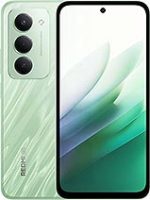
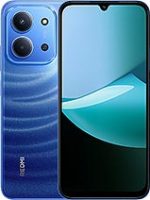
|
